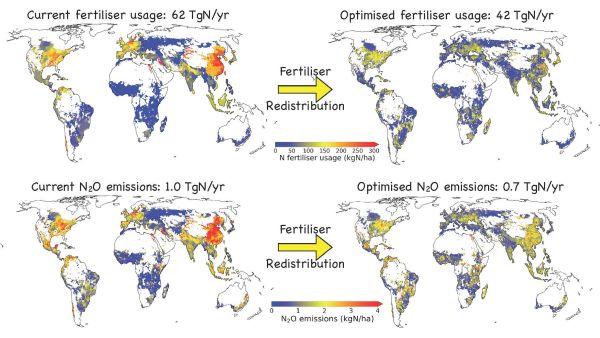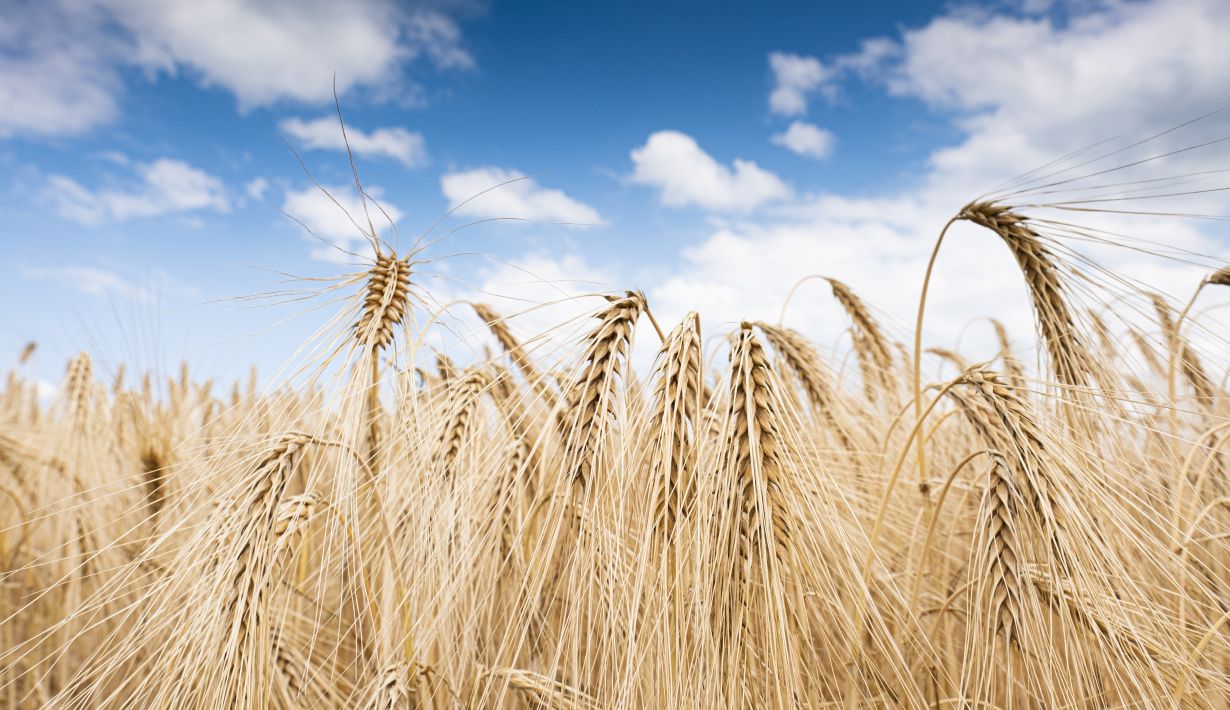The growing global population needs sufficient food. Its production causes overfertilization and increased nitrogen concentration in agriculture, which negatively affects the population, climate, and ecosystems. According to models of researchers of Karlsruhe Institute of Technology (KIT), however, today’s crop production might be maintained with a far smaller global fertilizer consumption, if nitrogen fertilizer would be used more homogeneously across global croplands. The results are reported in Communications Earth & Environment (DOI: 10.1038/s43247-023-00970-8).
About 60 percent of worldwide nitrogen fertilizer consumption are presently used for growing crops, such as corn, wheat, or rice. These plants need nitrogen fertilizers to grow and produce bigger harvests. However, large quantities of the fertilizer enter the ground and groundwater or are emitted into the atmosphere in the form of nitrous oxide. This pollutes the environment and contributes to the loss of biological diversity, to climate change, and to the degradation of the ozone layer. This problem is particularly serious in the big cultivation areas of North America, Europe, and East Asia, where comparably large amounts of nitrogen fertilizer are used. KIT researchers recently modeled the effect of a worldwide redistribution of nitrogen fertilizer use. They simulated various fertilizer quantities at different locations and calculated the total production of corn, wheat, and rice between 2015 and 2030 using the biogeochemical model LandscapeDNDC. “Our work was based on the question of how we can produce sufficient food without exceeding environmental boundaries,” says Dr. Andrew Smerald from the Atmospheric Environmental Research Department of KIT’s Institute of Meteorology and Climate Research (IMK-IFU), KIT’s Campus Alpine in Garmisch-Partenkirchen.
Grain Production Level Could Be Maintained with a Far Smaller Global Use of Fertilizer
“Our models show that worldwide consumption of nitrogen fertilizer could be reduced by 32 percent by a more homogeneous distribution. The current level of grain production would remain unaffected,” Smerald says. “For this, nitrogen fertilizer would have to be redistributed from traditional cultivation areas in China, North America, and Europe to less used areas, such as Sub-Saharan Africa.“ Then, the increased production in these regions would compensate decreased production in other regions. As a result, nitrogen fertilizer use for wheat and corn production would be reduced by 45 and 33 percent, respectively, without influencing worldwide production quantities. Moreover, nitrate leaching would be reduced by 71 percent for wheat and 63 percent for corn.

“According to our study, a more homogeneous distribution of nitrogen fertilizer across global croplands would reduce our dependence on the presently existing granaries and decrease nitrogen pollution in East Asia and other strongly fertilized regions,” Smerald says. Another advantage would consist in the fact that crops could be cultivated closer to the place of their consumption. Increased harvests in Africa would help the continent reach self-sufficiency.
Original Publication
Andrew Smerald, David Kraus, Jaber Rahimi, Kathrin Fuchs, Ralf Kiese, Klaus Butterbach-Bahl, & Clemens Scheer: A redistribution of nitrogen fertiliser across global croplands can help achieve food security within environmental boundaries. Communications Earth & Environment, 2023. DOI 10.1038/s43247-023-00970-8. https://www.nature.com/articles/s43247-023-00970-8
More about the KIT Climate and Environment Center
In close partnership with society, KIT develops solutions for urgent challenges – from climate change, energy transition and sustainable use of natural resources to artificial intelligence, sovereignty and an aging population. As The University in the Helmholtz Association, KIT unites scientific excellence from insight to application-driven research under one roof – and is thus in a unique position to drive this transformation. As a University of Excellence, KIT offers its more than 10,000 employees and 22,800 students outstanding opportunities to shape a sustainable and resilient future. KIT – Science for Impact.

